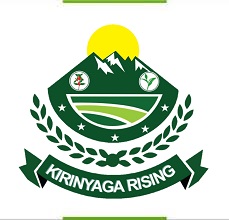Wezesha Kirinyaga pig project beneficiaries upbeat of good earnings as stock hit market.
As consumer demand for pork continue to rise, beneficiaries of Wezesha Kirinyaga pig project launched by Governor Anne Waiguru last year are upbeat of good earnings. The beneficiaries drawn from 20 farmers groups says piglets given by the county government have grown to maturity besides the sows giving birth and are now ready for selling.
Pork demand has been growing stronger in the wake of increased health awareness campaigns to reduce consumption of red meat. The demand for pork is driving pork prices higher and the farmers groups are hoping to tap into this. The pig project was launched by Governor Waiguru as part of Wezesha Kirinyaga economic program that focuses on diversification of agricultural activities with an aim of increasing household incomes. Twenty farmers groups were each given a pregnant sow and 15 weaner pigs. They were also provided with free pig feeds for the first two months of the project. The new litter will now form the new stock with some groups intending to raise them for meat production while other groups want to venture into selling piglets to other farmers within their localities.
Simon Macharia, a member of Kangu Thayu self-help group in Gichugu says that the project has been running smoothly and their sow has already given birth and once they start selling the pigs, the money will go a long way in expanding the group project as well as to individual members with the aim of uplifting their standards of living.
Loise Kimani from Kiangima Gwiteithia Youth group in Kirinyaga Central said that the pig project has enabled the members to effectively carry out an income generating activity. She thanked the county government for the initiative and urged the youth to form such empowerment groups.
Moses Murimi, the Chairman of Kirimunge Shiners Group said that even though most members previously did not have the knowledge to rear pigs, they were taken through training and they are now competent in matters pig rearing. He said that the project will take them far, observing that that the Duroc pig variety that was given to them is a profitable one since they are fast maturing and in no time they will be selling their pigs. He added that the project will help the youth earn an income as a group and as individuals, saying that besides selling the mature pigs, they will also use the project for breeding and sell piglets to other farmers.
Governor Waiguru said that at maturity, each pig is expected to fetch between Ksh. 17,000 and Ksh. 20,000 depending on its weight.
According to the 2019 Population and Housing Census and statistics from from the State Department of Livestock, small-scale farmers make 70% of all pig farmers. There are 595,631 pigs in Kenya that give a pork production of 14,440MT with a value of KES 3.8 billion annually. The number of pigs slaughtered increased by 7.8% from 2018 to reach 388,200. The current per capita consumption of pork stands at 0.4 kg, against the recommended 0.8 kg by WHO, projecting that an estimated 19,033 MT of pork is required to meet the current demand. By 2030, the projected demand based on the recommended consumption per capita stands at 53,160 MT. The projected population of pigs by 2030 is 1,171,175.
Governor Waiguru said that apart from the farmers earning income from sale of the pigs, there will be many women and youth working in pig transportation business, pork eateries as well as transportation of pig feeds among other support activities.The pig rearing groups are among the 473 groups that have been funded by the county government under the Wezesha Kirinyaga program to undertake various agricultural value chain projects such as poultry keeping, fish, tomato, dairy and avocado farming as well as bee keeping. Waiguru said that that the program provides farmers, among them women and youth with alternative livelihoods that will lead to more income and better standards of living. She noted that the Wezesha projects are not only in support of the county’s economic development agenda but will also contribute to the achievement of the food security goal of the Big Four Agenda.



